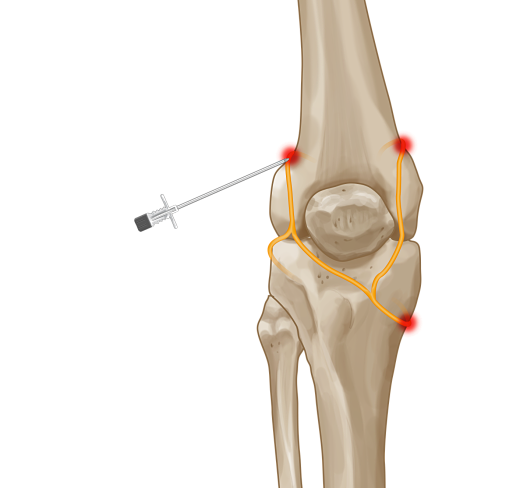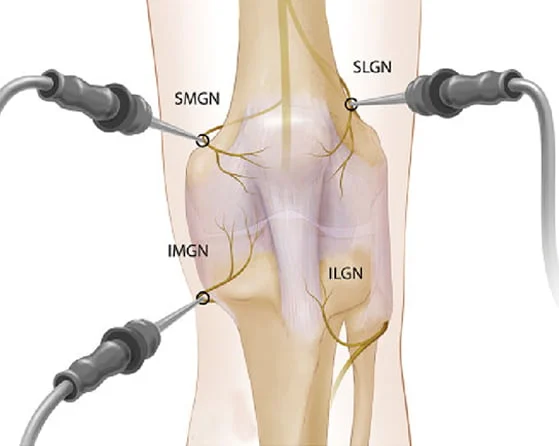Knee replacement surgery has long been a solution for patients suffering from chronic knee pain due to conditions such as osteoarthritis. While the procedure itself has improved over the years, post-operative pain and prolonged recovery have remained major challenges. A new advancement called the nerve-cooling technique is now changing the way knee replacement surgery is performed, offering patients a more comfortable and faster recovery.
This innovative approach targets specific nerves that transmit pain from the knee to the brain, providing effective pain control without relying heavily on medication. As a result, patients experience a pain-free or significantly reduced pain recovery period after knee replacement surgery.
Understanding the Nerve-Cooling Technique
What Is Nerve-Cooling?
Nerve-cooling, also called cryoneurolysis or cryoanalgesia, involves applying controlled cold to specific nerves to temporarily block their ability to send pain signals. This approach offers immediate pain relief without invasive surgery or long-term medication use.

In knee replacement surgery, the technique targets the genicular nerves, which are sensory nerves around the knee joint. By freezing these nerves temporarily, the procedure reduces post-operative pain and helps patients recover faster.
How Is It Performed?
The procedure is minimally invasive and often done on an outpatient basis. Using ultrasound or fluoroscopic guidance, a specialized probe is positioned near the targeted nerve. The probe delivers a controlled burst of cold, typically using nitrous oxide or carbon dioxide, to temporarily freeze the nerve.

This freezing blocks pain signals from reaching the brain. The effect lasts from several weeks to a few months, depending on the patient and the exact technique used.
Benefits of Nerve-Cooling in Knee Replacement Surgery

Immediate Pain Relief
One of the main advantages of nerve-cooling is rapid pain relief. Patients often feel reduced discomfort soon after the procedure, making the post-operative experience more tolerable.
Reduced Dependence on Medications
Effective pain management through nerve-cooling reduces the need for opioid medications, lowering the risks of side effects and dependency associated with long-term painkillers.
Enhanced Mobility and Rehabilitation
With less pain, patients can participate more effectively in physical therapy and rehabilitation exercises. This leads to improved joint mobility and a faster return to daily activities.
Shorter Hospital Stays
Nerve-cooling is minimally invasive and often allows patients to go home the same day. This shortens hospital stays and provides a more efficient recovery process.
Lower Risk of Complications
Unlike invasive procedures, nerve-cooling carries a lower risk of surgical complications such as infections, bleeding, or reactions to anesthesia.
Clinical Evidence Supporting Nerve-Cooling
Studies have demonstrated the effectiveness of nerve-cooling for managing knee pain. Research has shown that patients who received cryoneurolysis experienced significant reductions in pain and improved knee function compared to those who did not receive the treatment.
Other studies report that nerve-cooling improved overall quality of life and functional outcomes for patients undergoing knee replacement surgery. These findings support nerve-cooling as a valuable addition to traditional pain management strategies.
Considerations and Limitations

Temporary Nature of Pain Relief
While nerve-cooling provides immediate relief, the effects are temporary. Patients may require repeat treatments for ongoing pain management.
Not Suitable for All Patients
The procedure may not be appropriate for people with certain medical conditions or allergies to the substances used. A thorough evaluation by a healthcare professional is necessary.
Possible Side Effects
Although generally safe, some patients may experience temporary numbness, tingling, or weakness in the treated area. These effects usually resolve as nerve function returns.
Future Directions in Nerve-Cooling
Technology improvements are refining nerve-cooling procedures. Future developments aim to extend the duration of pain relief, improve precision in targeting nerves, and reduce side effects.
Researchers are also exploring combining nerve-cooling with regenerative treatments, such as stem cell therapy, to enhance recovery outcomes for knee replacement patients.
Conclusion
The nerve-cooling technique represents a major advancement in pain management for knee replacement surgery. By reducing post-operative pain, lowering the need for medication, and promoting faster recovery, it improves the overall patient experience.
As research continues, nerve-cooling may become a standard component of knee replacement surgery, offering patients a smoother and more comfortable recovery.
Do follow UAE Stories on Instagram
Read Next – UAE Tourism Sector Reaches $70.1bn GDP Contribution with Record Growth in 2024















